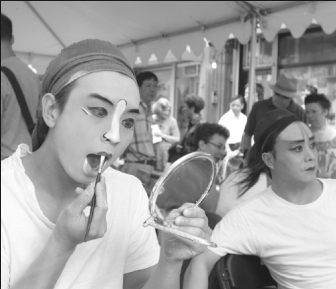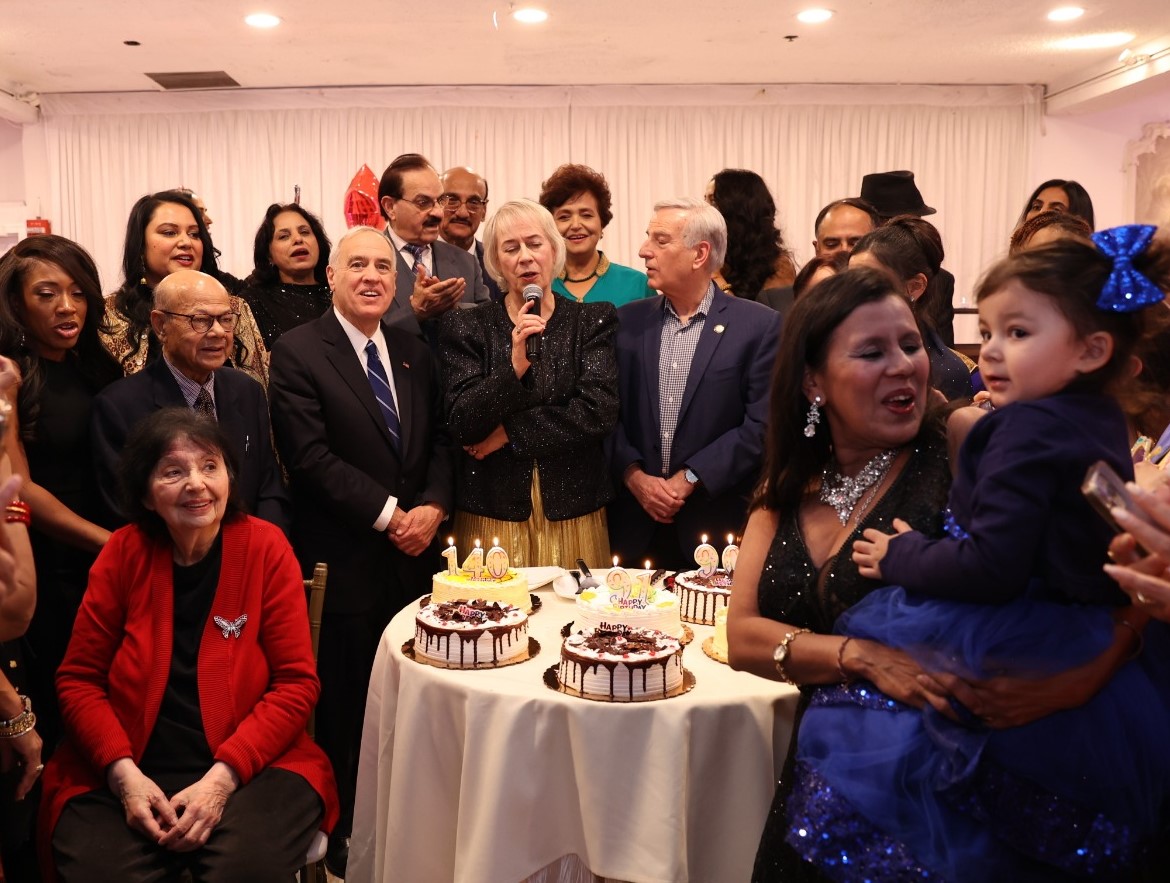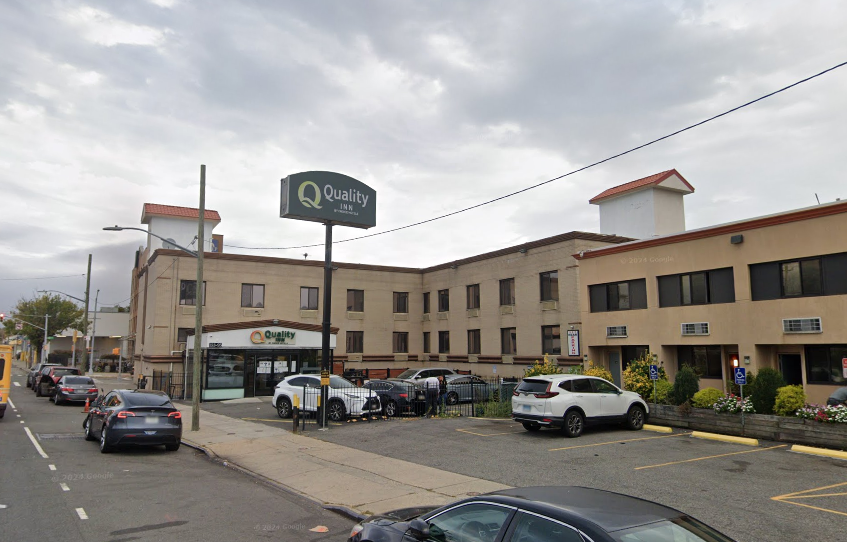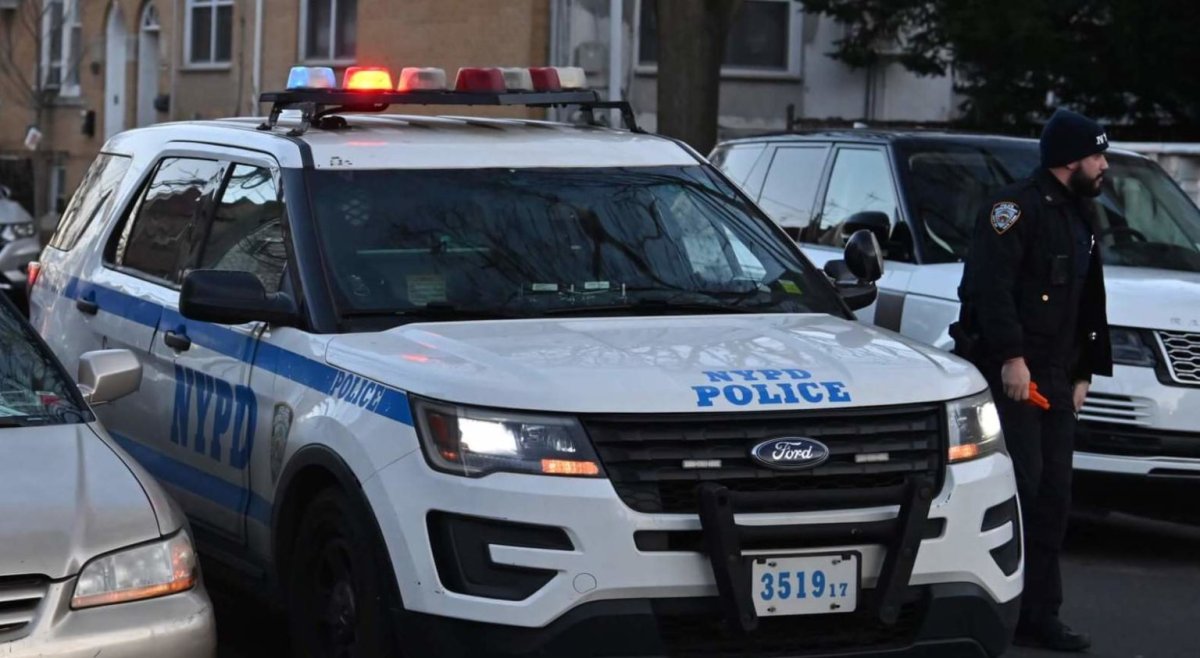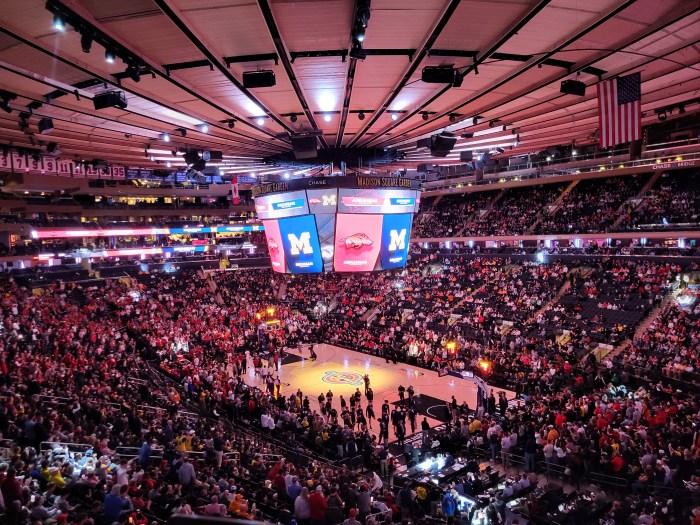By Rebecca Cathcart
Inside the 120-year-old synagogue on Eldridge St. in Manhattan last Sunday, Hsu Chun Chang bent his lean frame over the shoulder of Rabbi Zelig Mandel. A Torah scribe, Rabbi Mandel sat at a table covered with feather quills and crisp pages of inked text to demonstrate his craft.
Ginger Lai, one of seven Chinese translators who volunteered at the Seventh Annual Egg Rolls & Egg Creams Festival, a celebration of Jewish and Chinese traditional arts on the Lower East Side, facilitated a conversation between the two men.
“Is the writing small so that you can easily carry it with you?” she asked on behalf of Chang. “Is this for ceremonies or for private use?”
Chang, in a black T-shirt and black jeans, immigrated to the neighborhood from China 16 years ago and has worked in local restaurants ever since. He said he saw similarities between the traditions of Hebrew script and Chinese calligraphy.
“It interests me because it is mystical,” he said through Lai’s translation.
The synagogue’s first floor was a forest of scaffolding bathed in a construction lamp’s yellow glow. The festival grew out of efforts by The Eldridge Street Project to raise money for repairs to the synagogue. The restoration’s final phase is underway.
The grand structure, built in 1887 by Eastern European Jews, is a blend of architectural styles, including a Romanesque domed ceiling, delicate Moorish rooftop finials and a gothic rose window — one of several original stained glass pieces currently being repaired at a warehouse in DUMBO, Brooklyn.
The restored synagogue is slated to open in December. It will have an educational center in the basement and a brighter decorated dome. But the building will retain certain symbolic signs of wear, such as grooves along the hardwood floor where generations of worshipers rocked back and forth on their feet during prayer.
The dozens of fragmented pigeon skeletons — the bones reportedly were “picked clean” — found in the rafters, however, will be gone.
“We want this building to stay in use for a long time and to tell the story of the people who built it and worshiped in it,” said Amy Milford, the Eldridge Street Project’s deputy director. “But we want to recognize the new life in the neighborhood and celebrate that as well. It’s a celebration of the traditions of people who have made their way in America, next door to each other.”
In that sense, egg rolls and egg creams are the perfect delicacies to represent this festival, which takes place along Eldridge between Division and Canal Sts. Both were born of American adaptation. Neither food is native to Chinese or Jewish cuisines — and, incidentally, neither were made with eggs.
Just outside the synagogue, a crowd gathered around two Beijing Opera acrobats. The performers wore black and white silk pajamas embroidered with birds and swirling patterns. Their faces were painted pink and white. They jumped almost 5 feet off the ground, spinning their bodies like beach balls in the air.
In the tenement buildings across the street, the faces watching from the windows were Asian, and the signs that screamed in yellow, red and blue from first-floor shops were written in large Chinese characters above diminutive English translations. This is the intersection between Chinatown and the historically Jewish Lower East Side. It is also the nucleus of Chinatown’s newest community with a majority of immigrants from Fujian, a Chinese province close to Taiwan.
“That’s why this festival is so interesting,” said Ken Lo, a member of the China Arts Council and the festival’s emcee, “because the Chinese immigrants are thrown into interactions that they might not normally have. They wouldn’t normally go into the synagogue. But they stand and watch and listen, and we provide translators. They feel welcome.”
Lo stood on the sidewalk next to the crafts tables where children of Chinese and Jewish heritage used glue and glitter to decorate the yarmulkes that lay at their mercy.
“Both of these cultures have been immigrants in this community,” he said. “They’ve experienced similar kinds of things, like hard working conditions and being outsiders in a new environment. Every immigrant community experiences those things.”
While the festival has had specific themes in the past, it always highlights cultural parallels. This year, Rabbi Mandel’s writing table shared the synagogue floor with a demonstration of Chinese calligraphy. The main sanctuary room also held Yiddish and Chinese language classes. Chinese and Jewish folk music groups played alternately throughout the day. A master of Jewish paper cutting displayed her latticed creations down the block from a Chinese paper folder, who bent multiple sheets into fat, feathery hens.
Just south of Canal St., the mournful trumpet solo from the klezmer performance drifted above the clatter of mah-jongg tiles. Two games were in progress. Four elderly Chinese men massaged large, green and white plastic tiles into a pile in the table’s middle. Nearby, four young Jewish women placed smaller tiles in neat, double-stacked rows, referred to laminated National Mah Jongg League cards, and settled in for what they affectionately called “mahj.”
Wong Wai Ching hovered behind the women’s table.
“Too small! Too small!” she exclaimed while pointing at the new tiles. Wong, 89, learned to play mah-jongg at age 14 in Hong Kong.
“I no understand this,” she said, pointing to the tiles, including a “joker” tile that doesn’t appear in traditional Chinese sets.
Wong craned her neck in an attempt to raise her slight frame to a better vantage point. Her short hair framed an attentive expression.
“I no understand this,” she reiterated, then looked with bright eyes at the person standing next to her and said, “But I try to understand. I see.”
As for the riddle of the pigeon bones, the Eldridge Street staff has no immediate answers.
“The bones looked old to me, because there wasn’t a bit of flesh or feathers on them,” said Milford. “They were in the upstairs sanctuary in the inner rafters of the upper walls. There were rats years and years ago. The upstairs sanctuary hasn’t been in use since the 1950s and pigeons roosted there. There have been other animals that came into the building, but no major pet infestations.
“I guess we have no official plan for what to do with them,” Milford said. “We may try to give them to a school science class. I guess I should catch them before they get thrown away.”



